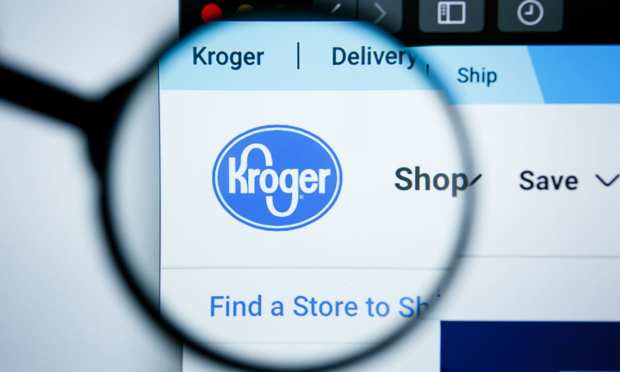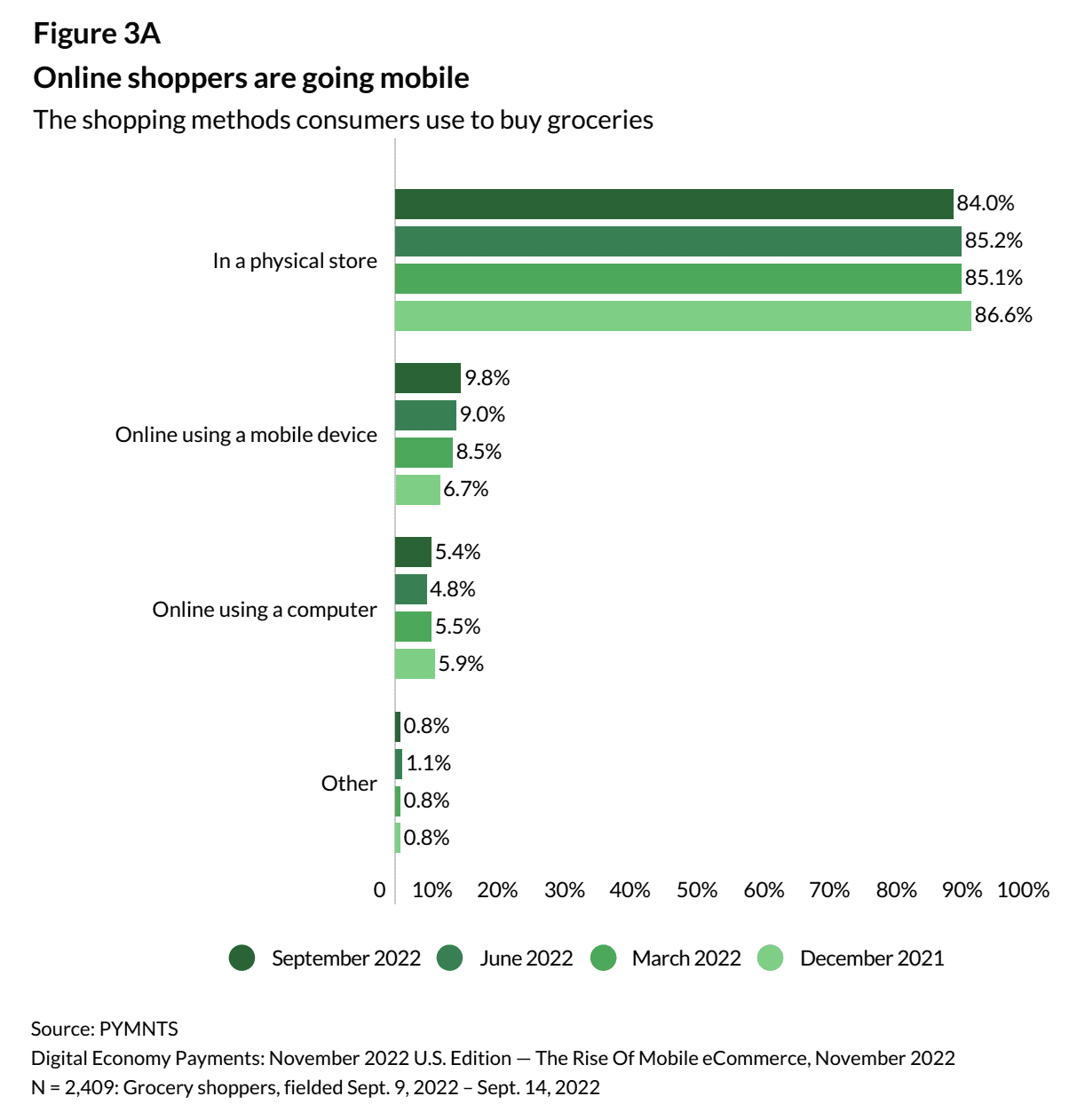eGrocery Begins to Take a Bite Out of Brick-and-Mortar

Most grocery shopping continues to be done in physical stores, but eCommerce is slowly gaining share.
By the Numbers
According to data from the latest edition of the Digital Economy Payments study, “Digital Economy Payments: The Rise Of Mobile eCommerce,” for which PYMNTS surveyed more than 2,700 U.S. consumers about their shopping habits, the share of grocery purchases consumers are making in stores is on the decline. The figure fell to 84% in Q3 2022, down one point from the quarter prior and three points from Q4 2021. Meanwhile, mobile shopping rose to 10%, up one point from the quarter prior and three points from Q4 2021.
Get the study: Digital Economy Payments: The Rise Of Mobile eCommerce
The Data in Action
Noting the shift to eCommerce, brick-and-mortar incumbents are doing everything in their power to drive up digital sales. For instance, Kroger, the largest U.S. pure-play grocery retailer, is investing in its digital business with the rollout of automated fulfillment centers for online orders, created in partnership with United Kingdom-based grocery technology company Ocado. Plus, the company has also been driving adoption of its delivery subscription, entitled Boost.
“Digital sales … returned to positive growth driven by our one-of-a-kind Boost membership program and expansion of our Kroger delivery network,” Kroger Chairman and CEO Rodney McMullen said on a call with analysts Friday discussing the Q2 financial results. “It’s clear our go-to-market strategy is connecting with customers, and we continue to build long-term customer loyalty.”
